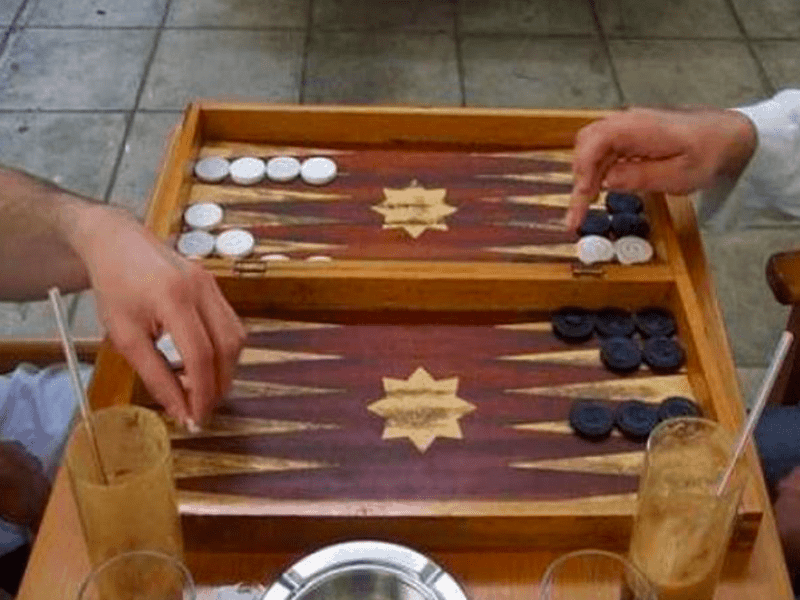Godzilla
ゴジラ
Tavli besteht aus drei Runden, die jeweils leicht unterschiedlichen Regeln folgen. Die geringen Unterschiede in den Regeln führen jedoch zu grundsätzlich verschiedenen Spielstrategien, was den Reiz von Tavli ausmacht.
Die drei Runden (Portes, Plakoto und Fevga) werden solange wiederholt, bis ein Spieler eine vorher festgelegte Punktzahl (meist 3, 5 oder 7) erreicht hat. Allen drei Regelvarianten ist gemeinsam, dass jeder Spieler versucht, seine gesamten Steine von ihrer Startposition aus zunächst in einen Zielbereich (Home-Board) zu bringen, von wo aus sie dann aus dem Spiel herausgewürfelt werden können. Es gewinnt der Spieler, der zuerst alle eigenen Steine vom Spielfeld entfernt hat.
Portes: Set-up and rules the same as backgammon, except that backgammons count as gammons (2 points) and there is no doubling cube.
Plakoto: A game where one checker can trap another checker on the same point.
Fevga: A game where one checker by itself can block a point.
Asodio: Also known as Acey-deucey, where all checkers are off the board, and players enter by rolling either doubles or acey-deucey.
These games are played one after another, in matches of three, five, or seven points.[76] Before starting a match, each player rolls 1 die, and the player with the highest roll picks up both dice and re-rolls (i.e. it is possible to roll doubles for the opening move). Players use the same pair of dice in turns. After the first game, the winner of the previous game starts first. Each game counts as 1 point, if the opponent has borne off at least 1 stone, otherwise 2 points (gammon/backgammon). There is no doubling cube.

 en.wikipedia.org
en.wikipedia.org

Die drei Runden (Portes, Plakoto und Fevga) werden solange wiederholt, bis ein Spieler eine vorher festgelegte Punktzahl (meist 3, 5 oder 7) erreicht hat. Allen drei Regelvarianten ist gemeinsam, dass jeder Spieler versucht, seine gesamten Steine von ihrer Startposition aus zunächst in einen Zielbereich (Home-Board) zu bringen, von wo aus sie dann aus dem Spiel herausgewürfelt werden können. Es gewinnt der Spieler, der zuerst alle eigenen Steine vom Spielfeld entfernt hat.
Greece[edit]
Backgammon is popular among Greeks. It is a game in which Greeks usually tease their opponent and create a lively atmosphere. The game is called "Tavli", derived in Byzantine times from the Latin word tabula.[70] A game, almost identical to backgammon, called Tavli (Byzantine Greek: τάβλη) is described in an epigram of the Byzantine Emperor Zeno (AD 476–481).[67] There are four games of Tavli commonly played:Portes: Set-up and rules the same as backgammon, except that backgammons count as gammons (2 points) and there is no doubling cube.
Plakoto: A game where one checker can trap another checker on the same point.
Fevga: A game where one checker by itself can block a point.
Asodio: Also known as Acey-deucey, where all checkers are off the board, and players enter by rolling either doubles or acey-deucey.
These games are played one after another, in matches of three, five, or seven points.[76] Before starting a match, each player rolls 1 die, and the player with the highest roll picks up both dice and re-rolls (i.e. it is possible to roll doubles for the opening move). Players use the same pair of dice in turns. After the first game, the winner of the previous game starts first. Each game counts as 1 point, if the opponent has borne off at least 1 stone, otherwise 2 points (gammon/backgammon). There is no doubling cube.

Backgammon - Wikipedia





